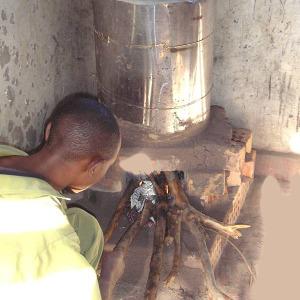
Insulating Ceramic Rocket Stoves, Through Mass Production Techniques by Ceramic Rocket Stoves Mass Produced
 Hung Vo Jan 4, 2018 06:29 | I think this is an interesting proposal. I would strengthen this proposal by adding information on cost/challenges and connecting it to existing proposals on Climate CoLab. |
 A. Reid Harvey Jan 22, 2018 02:37 | Proposal contributor As to suitable options for disposal of waste, as appropriate, using rocket stoves scaled up to incinerator sizes would provide an environmentally optimized alternative. You might also consider the fact that a number of small scale incinerators would be greatly preferable to a few very large ones. Regardless, a key will be proper sorting of the waste and the all important monitoring and evaluation - M&E - implicit.With these regards have a look at the following proposal, for which team mates/ partners are being sought:Insulating Ceramic Rocket Stoves through Mass Production Techniqueshttps://www.climatecolab.org/contests/2017/exploring-synergistic-solutions-for-sustainable-development/c/proposal/1334279/Not to suggest that the insulating ceramic rocket incinerator would be the one and only suitable option, you might also check out the resources of the Global Alliance for Incinerator Alternatives:http://www.no-burn.org/introduction-to-zero-waste/As commentary, please note the mistaken notion that burning waste, in and of itself is a bad idea. I.e., there are indeed environmentally responsible alternatives. |
 A. Reid Harvey Jan 22, 2018 03:02 | Proposal contributor While it's been observed that this proposal lacks novelty, this is mistaken. The novelty is in the use of conventional model and mold techniques, and this could be readily verified by consulting recognized ceramists who employ the various mass production techniques implicit. Such mass production techniques would benefit many beneficiaries, far beyond numbers suggested by one-off stove production; implications to the SDGs intuitively clear. To our knowledge no other stoves are produced, using such mass production techniques as are involved in the forming of the special bricks of the insulating ceramic rocket stove. As mentioned, the rocket stove design is arguably the most environmentally sustainable. An additional factor of novelty is the use of granulated bio-mass as addition to the clay composition of the brick, so as to make this insulating. Please check back here for additional comments. |